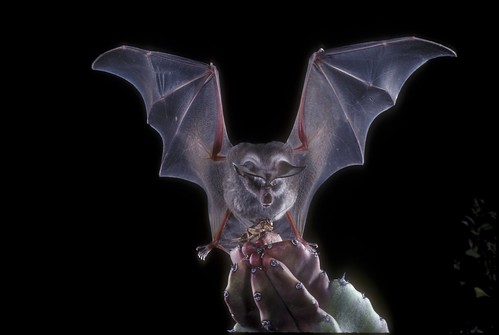
As Halloween approaches, it is easy to get caught up in the mystery and fear that surround bats, but the truth about bats is that they are fascinating animals vital for a healthy environment and economy.
As we celebrate National Bat Week, set your concerns aside. We need bats, and bats need us – now more than ever.
Bats occupy almost every habitat in the world. They devour tons of insects nightly, pollinate flowers, and spread seeds that grow new plants and trees. They are our most important natural predators of night-flying insects, consuming mosquitoes, moths, beetles, crickets, leafhoppers and chinch bugs, among others. Many of these insects are serious crop or forests pests, while others spread disease to humans or livestock. Every year, bats save us billions of dollars in pest control by simply eating insects.
Yet, bats are in decline nearly everywhere they are found. Bat numbers in the U.S. and Canada have declined dramatically as a new disease, White-Nose Syndrome, has killed more than 6 million bats in just six years. Learn more about this devastating disease by watching the Forest Service video, Battle for Bats.
“You don’t need extraordinary powers or a lot of money to help protect bats,” said Brandon Hartleben, a Forest Service wildlife biologist for the Eastern Region. “There are many actions both great and small that can help conserve bats and the places where they live.”
While superhero costumes may abound in stores this Halloween, the Forest Service and its partners invite you to join us in celebrating bats during National Bat Week. After all, bats are one of the smallest heroes of all.

Here are other ways to show appreciation for and learn more about bats:
- National Kick-Off of National Bat Week with Forest Service leaders hosting a special celebration of bats and bat conservation for employees at USDA headquarters in Washington, D.C. The Forest Service will sign a service-wide memorandum of understanding with the Organization for Bat Conservation. Rob Mies, executive director of the organization, and his “ambassador” bats will an exciting educational program about the wonder and value of bats, and what we all can do to be bat champions!
- Project EduBat – Education Taking Flight live webcast at 2 p.m. ET Oct. 29. This free broadcast will feature activities, resources, and lesson plans to help you teach both children and adults about bats. Learn how to use newly developed bat educational trunks that will be available across the country for your use! Special appearances by live bats.
- Enter the Get to Know bat week art contest. The Forest Service partner is hosting an online expressive arts contest for young people. Bat-inspired art, photography, writing, music or video can be entered in this free contest.
- Visit BatsLIVE, an online learning adventure with resources for teachers, including curriculum, posters and other resources.

Nancy Ross, director of renewable resources for the Forest Service’s Eastern Region, shares a bat skull with a visitor at the Schlitz Audubon Nature Center during the Wisconsin Bat Festival in Milwaukee. (U.S. Forest Service/Cynthia M. Sandeno)
